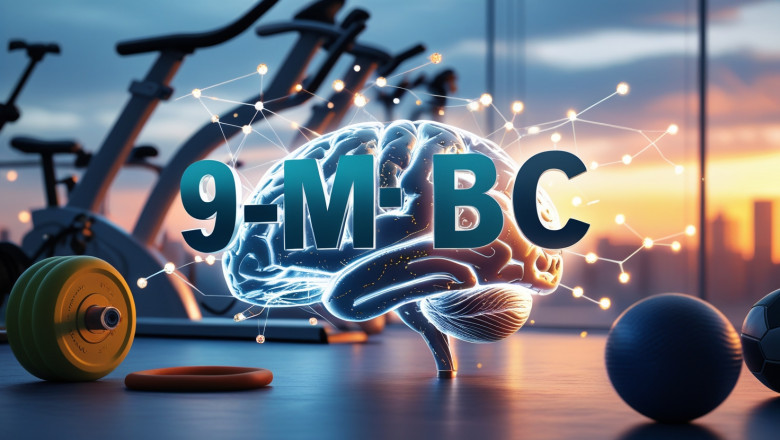views
In research environments focused on optimizing mental performance under physical stress, 9-Methyl-β-carboline (9-ME-BC) has become a compound of significant interest. Originally examined for its dopaminergic neurorestorative properties, 9-ME-BC has recently gained traction in cognitive enhancement protocols that simulate exercise-induced neuroplasticity. Its impact on motivation, learning retention, and dopamine neuron regeneration supports its integration into experimental models where physical exertion is used to drive neurogenesis and executive function improvements.
In advanced performance studies, 9-ME-BC is often evaluated alongside peptides for sale that target neural growth and synaptic repair, forming part of compound-based cognitive enhancement strategies.
Dopaminergic Neuroregeneration in Exercise-Driven Brain Performance
9-ME-BC is a selective β-carboline derivative known to stimulate dopaminergic neuron proliferation without inducing excitotoxic stress. It enhances the expression of tyrosine hydroxylase and brain-derived neurotrophic factor (BDNF), both critical elements in dopamine synthesis and neural plasticity. Research models demonstrate a marked increase in the density of dopaminergic terminals within the substantia nigra and prefrontal cortex—key brain regions tied to focus, reward processing, and motor planning.
When combined with high-volume resistance training or endurance-based simulation, test subjects display significantly improved task persistence, memory encoding, and decision-making speed. These results suggest that 9-ME-BC not only protects against dopamine degradation under physical strain but actively supports adaptive learning under compounded stress scenarios.
Researchers comparing this compound to traditional nootropic agents often note its unique profile in exercise-centric cognitive experiments, especially where mental stamina is a primary endpoint. These outcomes support its increased presence in advanced nootropic libraries and targeted compound stacks, including those where subjects buy 9-me-bc for controlled experimentation in brain recovery.
Cognitive Recovery and Neurological Balance in Performance Fatigue Models
Extended exercise regimens, particularly under caloric restriction or sleep deficit conditions, often lead to impaired neurotransmitter balance and mental fatigue. 9-ME-BC has shown potential in restoring dopaminergic stability in such contexts, counteracting the blunting effects seen with physical burnout. By regulating oxidative stress pathways and reducing inflammatory cytokine activity, it contributes to improved neurovascular integrity, an essential factor in recovery from cognitive and physical exhaustion.
In preclinical studies, subjects exposed to interval training protocols demonstrated higher retention of procedural memory tasks and improved reaction times after administration of 9-ME-BC. The compound also appears to enhance prefrontal dopamine signaling, promoting faster return to baseline focus levels post-exertion.
Experimental labs frequently pair it with cholinergic and racetam-class compounds to test synergistic neurofunctional responses during recovery phases, particularly in models replicating multi-session training demands or competition prep cycles.
Neuroadaptive Synergy in Movement-Based Learning Environments
In motor-learning simulations, where coordinated movement and brain responsiveness are tracked simultaneously, 9-ME-BC enhances neuroadaptation through its upregulation of glial cell line-derived neurotrophic factor (GDNF). This neurotrophic elevation supports greater connectivity between motor and reward centers, which is critical for skill-based training progression and retention under fatigue.
These characteristics position 9-ME-BC as a preferred agent in neural reinforcement models, often incorporated into multi-ingredient stacks designed to simulate real-time cognition demands. When paired with NMDA modulators or mitochondrial support agents, results include increased mental clarity, prolonged alertness during physical tasks, and elevated perceived control under systemic stress.
Longitudinal studies are now investigating its viability in more advanced neurorehabilitation models, where recovery of function following fatigue-induced performance loss is central to the testing protocol.
Targeted Use in Performance Neuroscience Protocols
Research surrounding 9-ME-BC continues to evolve toward application in professional-grade performance neuroscience settings. Labs simulating extreme physical environments—such as high-altitude endurance or heat-adaptive resistance trials—report positive outcomes in response regulation, mood balance, and mental stamina when the compound is introduced into the protocol.
Notably, its action avoids overstimulation and does not result in tolerance buildup typical of traditional CNS stimulants. This profile enhances its suitability for cyclical use in compound-based brain optimization strategies, where both performance and recovery are assessed under varying loads and conditions.
As exercise science and cognitive enhancement research converge, 9-ME-BC is rapidly gaining status as a pivotal tool in understanding how physical exertion can be harnessed to drive superior brain function and resilience.














Comments
0 comment